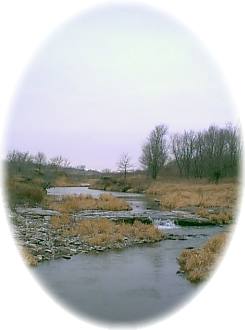
Early archeologists observed nearly 300 unusual depressions in flint-rich areas of Pennsylvanian limestone formation along Weeping Water Creek near Nehawka. These features proved to be quarry pits dug by prehistoric inhabitants to depths of over ten feet. The massive amount of labor expended to obtain flint testifies to the importance of chipped stone to prehistoric people. The group most responsible for the mines is the Nebraska Phase, a farming and hunting culture that flourished in eastern Nebraska from A.D. 1100-1400. Listed on the National Register of Historic Places.
